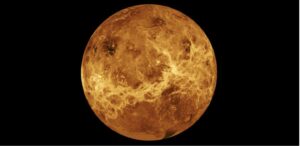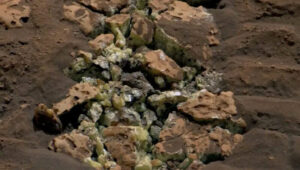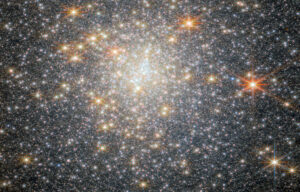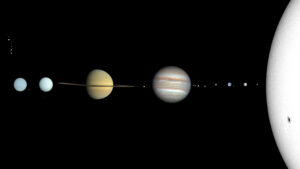It’s tempting to think of the Moon as unchanging, a place where time stands still. But a new NASA-funded study urges future Moon missions to exercise caution. The Moon is shrinking and could become even less hospitable.
A cooling core
The Moon’s core is cooling; as it does, it slowly shrinks our satellite. This contraction is very small (roughly 45m in diameter over the last few hundred million years) but causes moonquakes.
Unlike Earth, the Moon does not have tectonic plates, but rather a single plate. As this contracts, the crust scrunches together, pushing up ridges scientists call thrust faults. Images from NASA’s Lunar Reconnaissance Orbiter show thousands of these small thrust faults on the Moon.
“The fact they remain on the surface, instead of being eroded to nonexistence, means they must be young and probably active,” lunar geologist Tom Watters told The Washington Post.
The Moon’s contraction won’t affect Earth. Its mass isn’t changing so its shrinking diameter will not impact our tides. However, moonquakes could cause issues for future manned missions to the Moon’s surface.
South Pole moonquakes
The faults appear all over the Moon’s surface, but a particularly powerful shallow quake occurred near the South Pole. This is an area of considerable scientific interest. The region features areas that lie in permanent shadow, and scientists speculate that water ice could be present.
Both India’s successful soft-landing in August last year and Russia’s Luna-25 probe crash targeted the South Pole for this reason. NASA’s Artemis III mission, recently delayed till at least September 2026, plans to land in the same area.
The new study analyzed areas around the Pole and found that some areas, including the Shackleton Crater (a proposed Artemis III landing site), were susceptible to landslides caused by moonquakes.

NASA is gearing up to return to the Moon. Here, Artemis II crew members pose during testing last year. From left: CSA (Canadian Space Agency) astronaut Jeremy Hansen, NASA astronauts Christina Koch, Victor Glover, and Reid Wiseman. Photo: NASA
Moon not benign, static
However, the report team is keen to emphasize that the study is not intended to curtail exploration.
“This is not to alarm anyone and certainly not to discourage exploration of that part of the South Pole of the moon but to raise the caution that the moon is not this benign place where nothing is happening,” Watters said.
Predicting how often moonquakes occur in a specific region is difficult, and a manned mission is unlikely to spend an extended period on the Moon, minimizing the risk of humans experiencing a moonquake. Therefore the new study is unlikely to change NASA’s plans for Artemis III.
Experts are considering 13 potential landing spots near the South Pole based on “criteria such as the ability to land safely in the region, the potential to meet science objectives, launch window availability and conditions such as terrain, communications, and lighting,” study coauthor and NASA planetary scientist Renee Weber explained to CNN.
Though moonquakes might be a minimal risk for Artemis III, space agencies will need to factor the quakes into plans for long-term visits to our solar satellite. It’s probably best not to plan a permanent Moon base on a seismically active fault.






